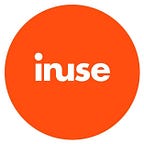All design has the potential to include or exclude users. The greater the number of users who are excluded, the lesser the benefit to the enterprise or activity in question. Inclusive design makes it possible to include more people and to create greater benefits through an increased understanding of user diversity. For example, this diversity may pertain to varying abilities, needs and motivations, all of which we must take into account in our design.
With the help of inclusive design, we can promote innovation and maximize the impact of our activities and enterprises by creating more benefits for more people. This is relevant for anyone who designs and develops sustainable products and services, and may be applied to everything from digital tools to physical locations. A wealth of material is available to those who wish to know more about inclusive design, and here I have listed my top tips about good resources to take advantage of if you wish to learn more.
Introduction
Regardless of whether you prefer to read a book, attend a lecture or engage you in a so-called “knowledge track,” there is great potential for learning.
- Laura Kalbag’s book Accessibility for Everyone is engaging and easy to read.
- My lecture from AgileByExample provides you with tips on simple ways to start working practically with inclusive design with the help of user testing. —
- Mikoteket’s digital accessibility “knowledge track” offers a good introduction to the topic and good opportunities for reflection.
Help along the way
If you need help with a practical question or access to good tools and resources, I would advise you to check out the following web pages.
- Internet guidelines provide a wide range of good materials and tips about useful services.
- With the Funkify plugin for Google Chrome, you can test how your site is perceived by people with different functional variations and get tips on what can be addressed in order to improve accessibility.
- Two good websites featuring design patterns for inclusive design are Inclusive Components and eBay Mind Patterns.
- If you require statistics to justify the inclusive design, the Funka website has good material on this subject.
- The A11Y Project has many great how-to’s, as well as clever tips.
Guides on rules and frameworks
The development of rules and frameworks for accessibility is progressing slowly but surely, and good guides regarding the latest updates can be found on these websites.
- Axess Lab has written a clear and easy-to-understand article on the Web Accessibility Directive.
- Per Axbom provides a good introduction to WCAG in the form of a living e-book.
- Alexander Skogberg explains what’s new in WCAG 2.1.
Inspiration from others
When it comes to successful Inclusive design work, there are plenty of activities and enterprises from which to draw inspiration. Among these are:
- Microsoft Inclusive Design provides good guides and resources for working with inclusive design.
- The University of Cambridge collaborates with other organizations and companies to develop good tools for inclusive design.
- Gov.uk has very good material for inclusive design in the public sector.
- Axess Lab has a collection of good examples of inclusive design in practice.
Miscellaneous
Last but not least, three mixed impacts in the fantastic world of inclusive design!
- Seven things every designer should know about accessibility.
- Distance-learning course on Universal Design at Lund University’s Faculty of Engineering.
- My lecture from Interaction16 about how to design for all gender identities.
If you wish to know more about inclusive design, please feel free to contact me. I can be reached at sara.leren@inuse.se.
